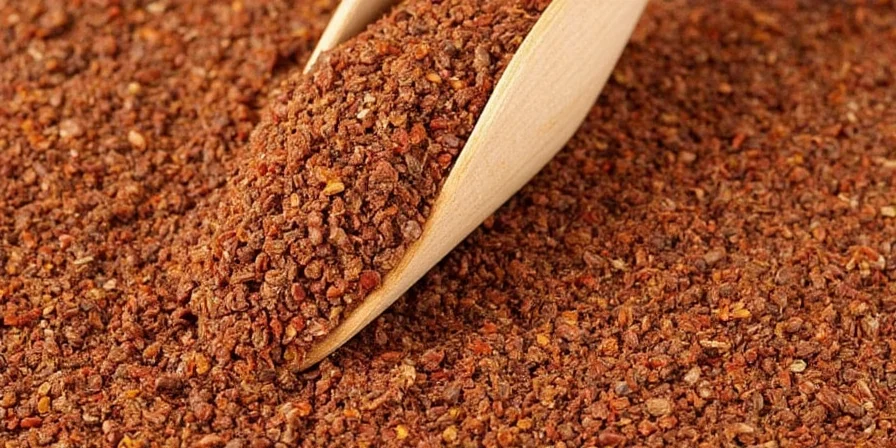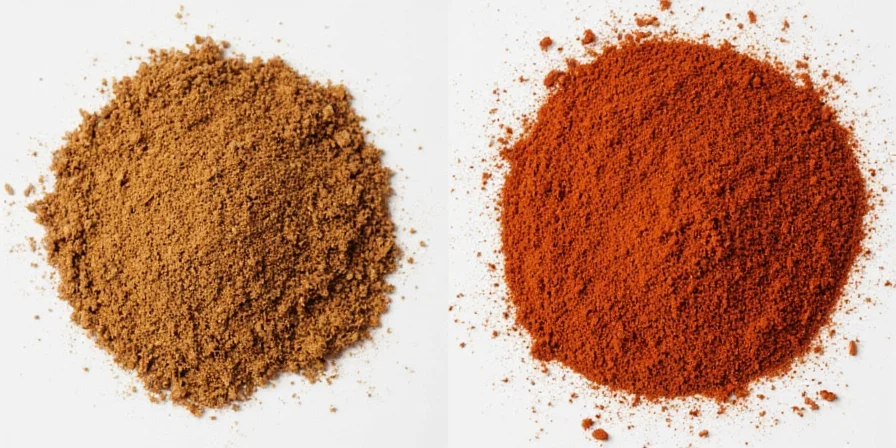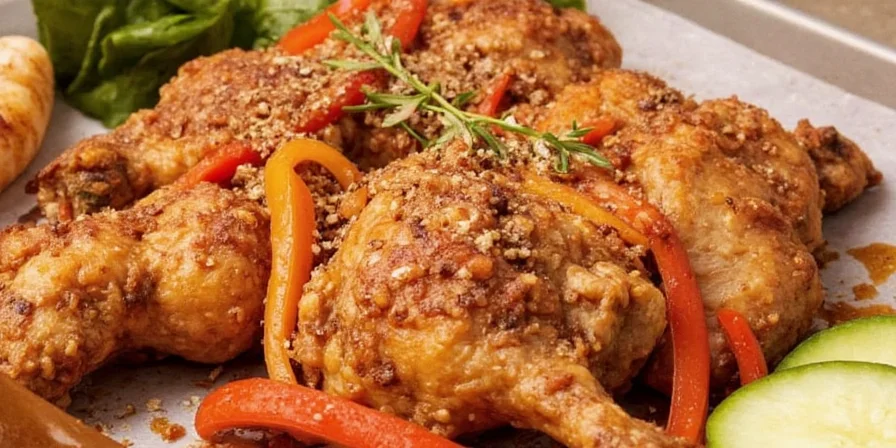
7 spice mix is a traditional Middle Eastern seasoning blend typically containing paprika, cumin, coriander, cayenne, turmeric, black pepper, and cinnamon. Despite its name, authentic recipes often include 8-10 ingredients with ratios varying by family and region. This versatile blend forms the flavor foundation for dishes like maqluba, fattoush, and lentil stews. Unlike commercial versions that prioritize heat, authentic 7 spice creates balanced flavor harmony essential to Middle Eastern cooking.
What Exactly Is in 7 Spice Mix? (Authentic Recipe)
Here's the basic formula used in Levantine kitchens that you can make at home:
| Ingredient | Traditional Ratio | What It Contributes |
|---|---|---|
| Paprika | 2 parts | Earthy base and rich color |
| Cumin | 1.5 parts | Nutty depth and preservation qualities |
| Coriander | 1 part | Citrus notes that balance meats |
| Cayenne | 0.5 parts | Subtle heat and metabolic boost |
| Turmeric | 0.5 parts | Golden hue and anti-inflammatory properties |
| Black Pepper | 0.5 parts | Boosts absorption of other spices |
| Cinnamon | 0.5 parts | Warm sweetness representing hospitality |

Common Misconceptions About 7 Spice Mix
Before exploring further, let's clarify what 7 spice mix is not:
- It's not the same as Za'atar (which features thyme, sumac, and sesame seeds)
- It's not identical to curry powder (which emphasizes turmeric and fenugreek)
- It's not supposed to be extremely hot - authentic versions balance heat with other flavors
- The "7" refers to cultural completeness, not a strict ingredient count
Why Authentic 7 Spice Mix Differs From Store-Bought Versions
Most commercial "7 spice" blends sold in Western markets prioritize heat over balance, often containing:
- Excessive cayenne that overwhelms other flavors
- Fillers like salt or anti-caking agents
- Missing key components like cinnamon or black pepper
- Pre-ground spices that have lost potency
Traditional home blends use freshly ground whole spices in specific ratios that create flavor layering - where each component enhances the others without any single spice dominating.

3 Simple Ways to Use 7 Spice Mix in Everyday Cooking
You don't need to cook elaborate Middle Eastern dishes to enjoy this blend:
- Roasted Vegetables: Toss carrots or cauliflower with 1 tbsp 7 spice mix and olive oil before roasting
- Simple Meat Rub: Combine 2 tbsp 7 spice mix with 1/4 cup olive oil for chicken, lamb, or fish marinade
- Flavor Boost: Add 1 teaspoon to soups, stews, or even scrambled eggs for instant depth
How 7 Spice Mix Compares to Other Popular Blends
Understanding these differences prevents recipe failures:
| Spice Blend | Best Used For | When to Add | Substitution Tip |
|---|---|---|---|
| 7 Spice Mix | Meat/vegetable foundations | Early in cooking process | Use equal parts cumin + paprika + pinch cayenne |
| Garam Masala | Finishing accent | At the end of cooking | Not a direct substitute - different flavor profile |
| Ras el Hanout | Slow-cooked dishes | With oil at start | Use 7 spice + additional cardamom/clove |
| Chili Powder (US) | Primary flavor driver | When building base flavors | Use half amount of 7 spice + paprika |

Proper Storage to Maintain Freshness
Maximize shelf life with these practical tips:
- Store in airtight container away from light and heat
- Use within 3-4 months for peak flavor (longer than single spices)
- Never store above the stove where heat degrades quality
- Consider freezing small portions for long-term storage
- Make small batches to ensure freshness

Frequently Asked Questions (FAQ)
Is 7 Spice Mix the same as Za'atar?
No. Za'atar features thyme, sumac, and sesame seeds with herbal notes, while 7 Spice combines warm spices like cumin and paprika. They originate from different regional traditions and serve distinct culinary functions.
Can I adjust the heat level in homemade 7 Spice?
Absolutely. Reduce cayenne proportionally while increasing paprika to maintain volume. For authentic balance, never eliminate cayenne completely as it provides essential flavor complexity beyond heat.
Why do some recipes include more than 7 spices?
The "7" represents completeness in cultural symbolism rather than a strict count. Practical cooking requires additional components like cloves or nutmeg for specific dishes, but the core seven maintain the blend's identity.
How does 7 Spice differ from curry powder?
Curry powder emphasizes turmeric and fenugreek with Indian spice profiles, while 7 Spice features cumin and paprika as base notes. 7 Spice integrates heat gradually during cooking versus curry powder's upfront warmth.
What's the easiest way to try 7 spice mix for beginners?
Start by adding 1 teaspoon to ground meat for burgers or meatballs. This introduces the flavor profile without overwhelming your palate. For immediate results, mix 1 tbsp with olive oil as a quick vegetable roast seasoning.
Why Home Blends Beat Store-Bought Options
Commercial spice blends lose potency during shipping and sitting on shelves. When you make your own 7 spice mix:
- You control ingredient quality and freshness
- You can adjust ratios to match your personal taste
- You avoid unnecessary additives and fillers
- You preserve delicate flavor compounds that degrade in pre-mixed blends
- You save money compared to specialty store versions
Even a basic homemade version with just the core 7 ingredients will outperform most commercial blends. For best results, toast whole spices before grinding to unlock maximum flavor.










 浙公网安备
33010002000092号
浙公网安备
33010002000092号 浙B2-20120091-4
浙B2-20120091-4